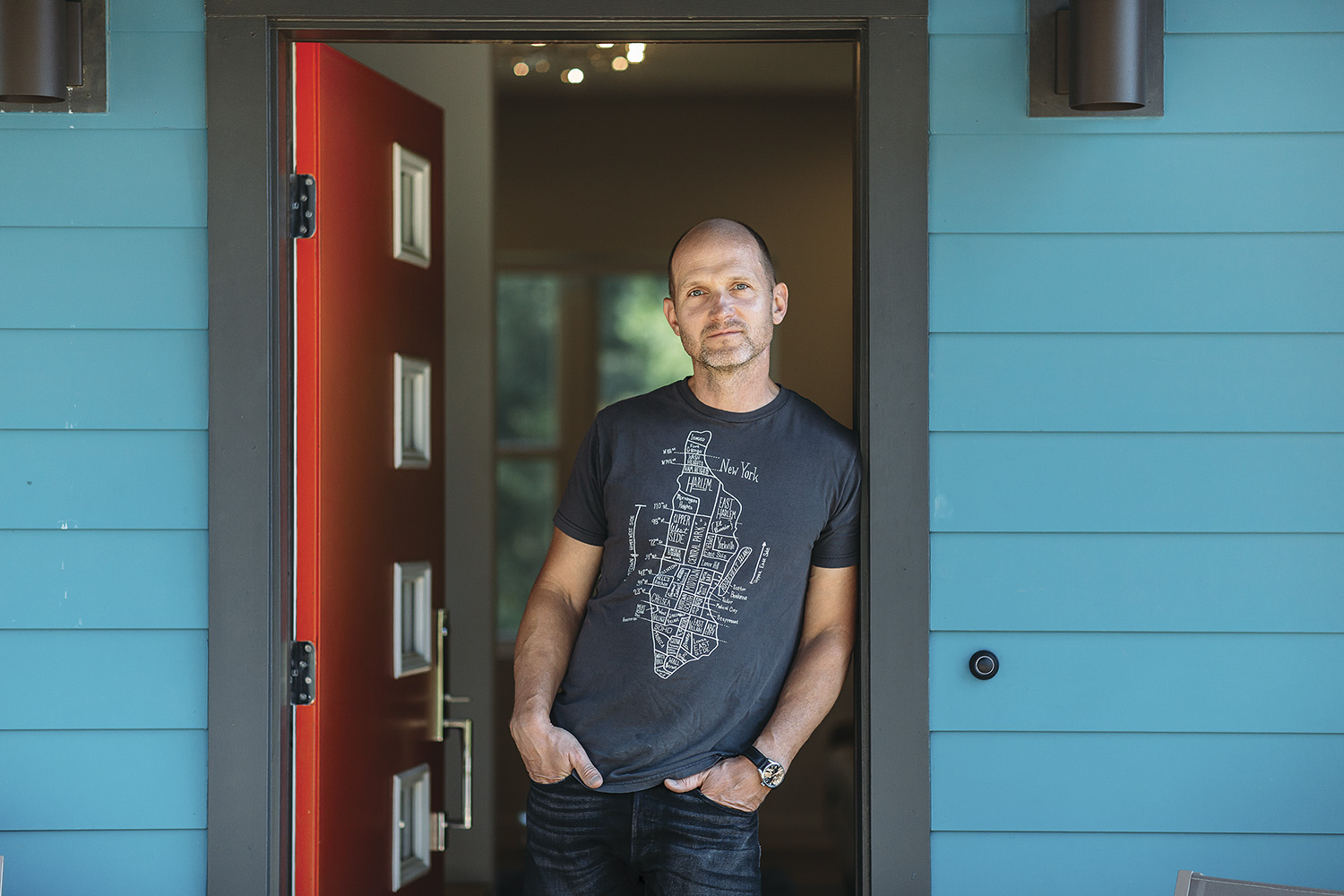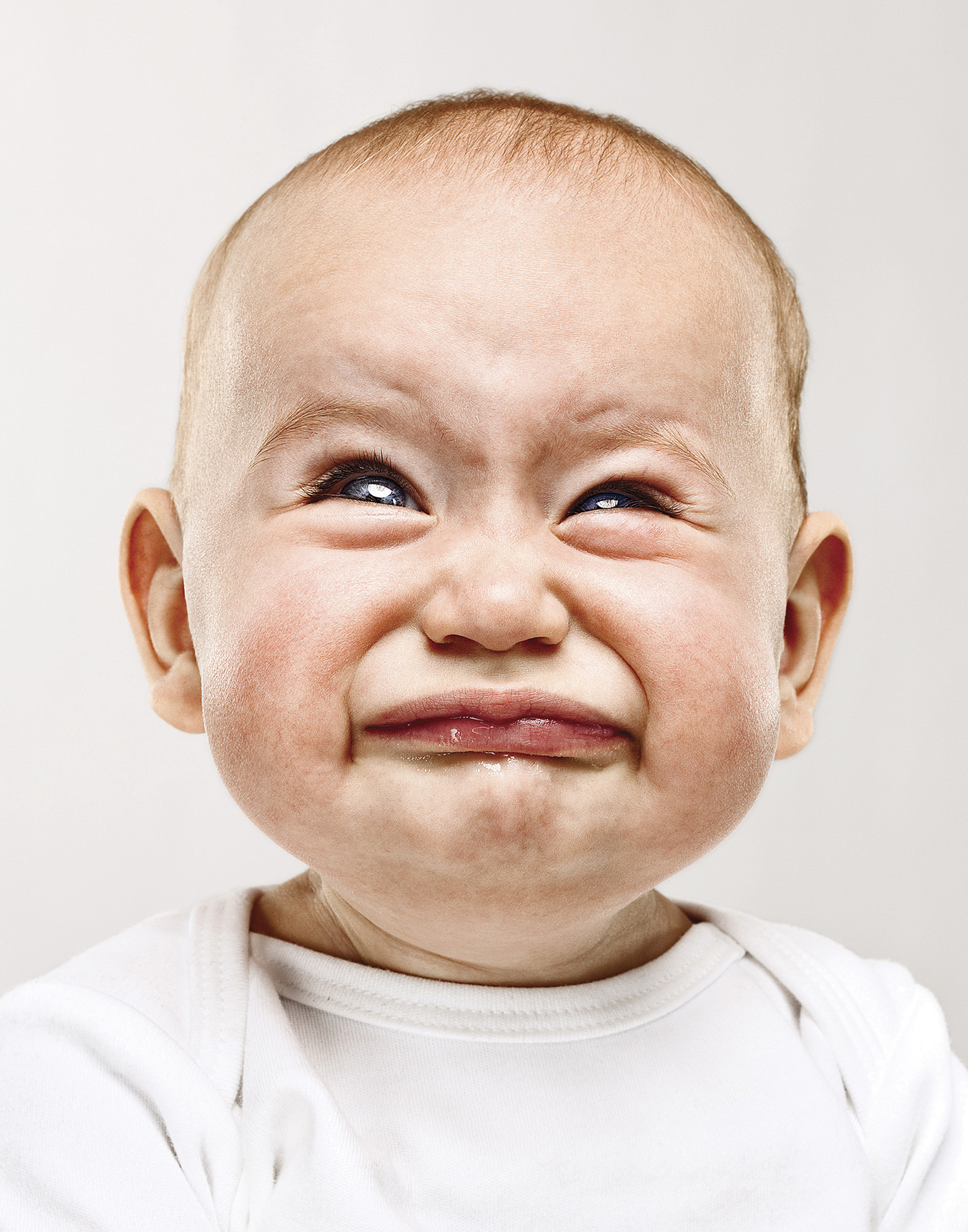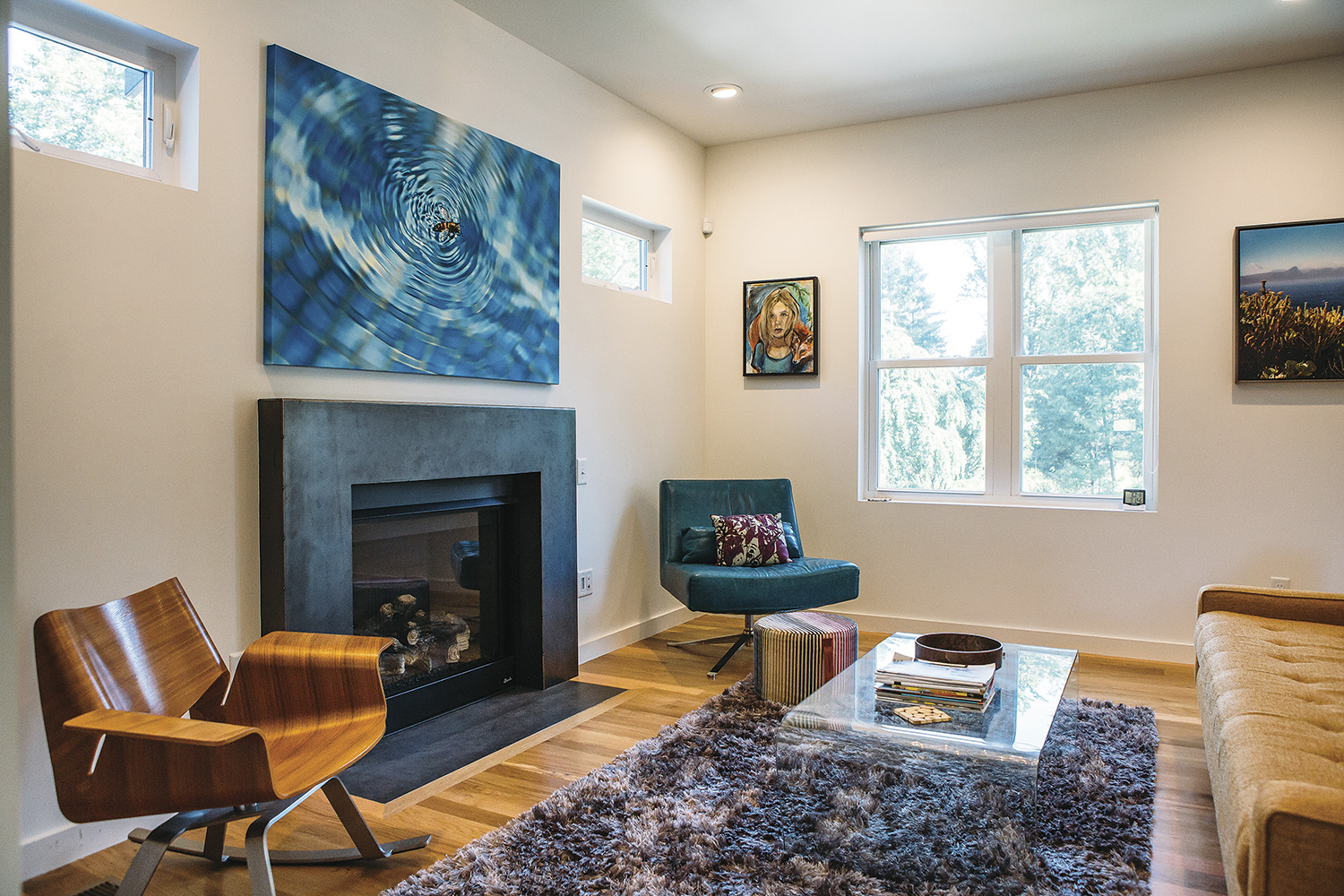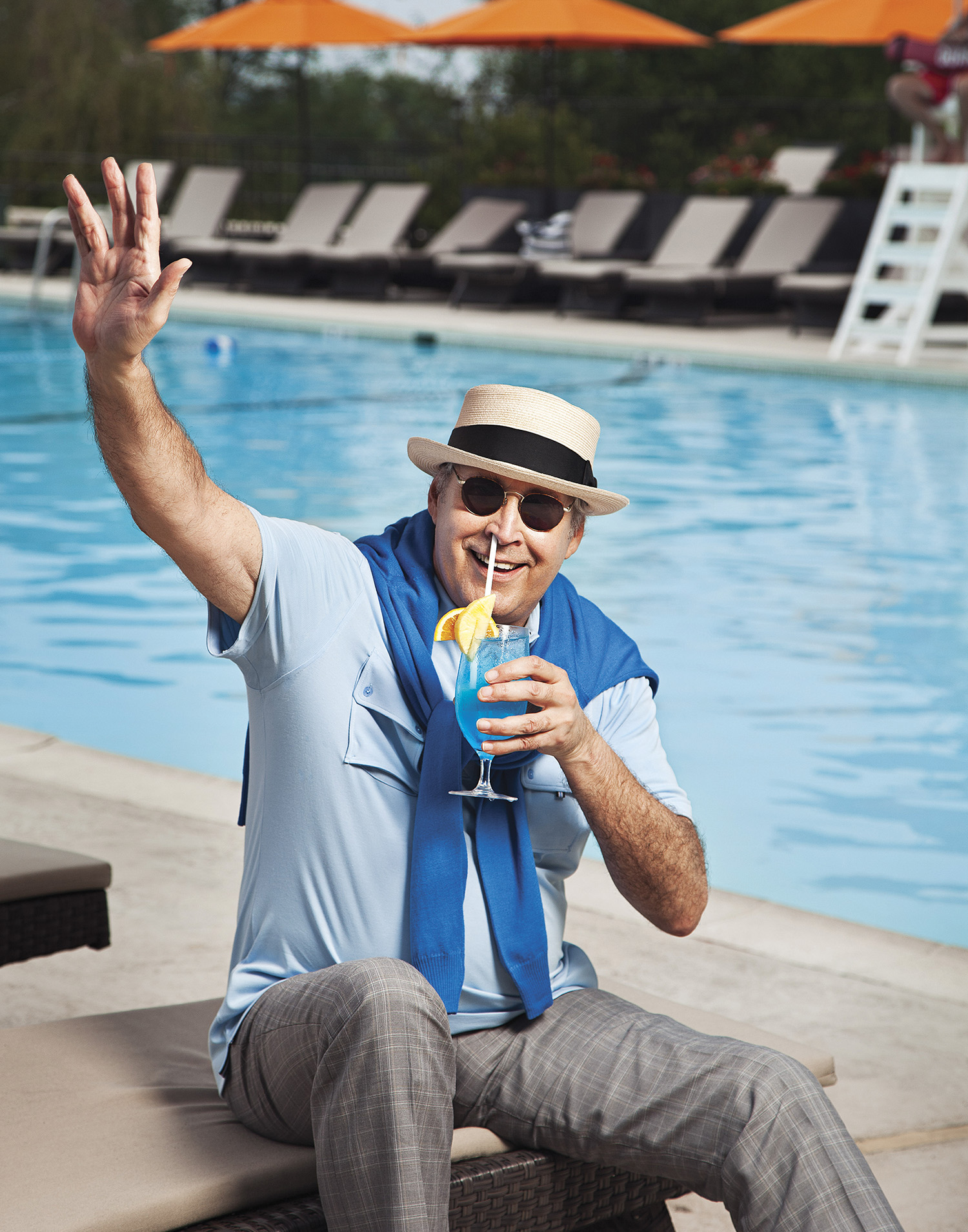
Evan Kafka has stood in front of numerous celebrities, made sure their features were in focus, and clicked a button. His photographs have adorned national magazine covers — but they aren’t on display in his West Asheville home.
The modern living space, which moves seamlessly into a large kitchen, contains a couple of oversized prints — a bug in a kiddie pool from Puerto Vallarta, some doves taking off in Paris. The three-bedroom home, painted “Great Falls” blue with accents of unpainted wood, is twice the size (2,400 square feet) of the last space Kafka and his family inhabited, in Brooklyn’s hip Williamsburg neighborhood.
Kafka’s home office doubles as the guest room. It’s in a cramped corner of the basement, but there’s a space for an electric Suhr guitar and amplifier. His desk is filled with computer equipment. A shelf is loaded with family photo albums, and he has a digital library bursting with more than 200,000 additional images.
His work has been seen in Time, Parents, Forbes, and Barron’s, and he’s done huge ad campaigns for Huggies, yielding some of his many memorable baby photos. Kafka, who has photographed celebrities such as Chevy Chase, Michael Stipe, Al Roker, and Bill Gates, first trained in computer repair before he returned to school for photography.
But after almost 20 years living and working in New York City, including weathering Hurricane Sandy, he wanted to slow down. He and wife, Christie, who’s from Charlotte, moved to Asheville with their two children — 10-year-old daughter Sophie and 5-year-old son Wyatt.

The photographer — who is Franz Kafka’s first cousin thrice removed — travels several times a month for photo shoots, but he took some time to chat with Carolina Home + Garden about life behind the camera.
Why move to Asheville?
I felt like it had that sort of creative energy that I found in Brooklyn in the early ’90s. People are accessible here. There’s amazing food, cost of living, incredible weather, and great natural beauty. It’s like moving to Hawaii. Why not live someplace that everyone envies? Asheville also has its own unique, down-to-earth culture. I also enjoy the Southern culture. All things added up, it’s sort of a parallel opposite to New York City.
How different is what you do from photojournalism?
I work with lighting all the time now. I do portraits of high-profile people and animals and babies. I do a lot of big-production advertising photo shoots. It used to just be me working out of a bag on my shoulder. Now I don’t work without an assistant, and I often work with more, or we have a crew that has hair and make-up and prop stylists and they have assistants. There could be 20 people on the set. I’m not really in charge, because the client is always in charge, but I’m the one who has to make it work.

What was your most surprising magazine cover experience?
My son on the cover of Reader’s Digest was a complete surprise. That was cool. It was a photo of him at about four months old that I had taken and submitted to Getty Images. It was a full body shot, but they just used his head. They put it on red and the cover just said, “Laugh.” His aunt saw it and sent us a picture that said, “Is this Wyatt?”
You shoot photos of celebrities and babies and animals. Who are easier to deal with?
In some ways, babies and animals are easier, because they make these amazing faces and expressions. If they are happy, there’s no problems. They may be moving or don’t take commands, but I’ll take that any day over someone with a big ego or a triple chin and who’s worried about their hairdo. I photographed Robert DeNiro once and he would barely look at me. He’s like, “You’re going to have to work with what you get.” It’s more fun for me to shoot a baby or an animal. I like advertising for that reason. You have a whole crew of people who are doing whatever it takes to get the best result.
You get such great expressions from children — how?
(Makes loud duck sound) — I do that across the board. I do that to animals, babies, and corporate executives. I just did it to a billionaire last month. I have no shame.
How often do you use your phone to take photos, or do you?
I use my phone to take photos of the plumbing under the sink before going to the hardware store. Sometimes I use it if I know it’s something I’m only taking to post to social media, like a funny road sign, or if I don’t have another camera with me. But I always try to have one. You never know when life’s precious moments will present themselves.

What are your thoughts on the industry these days?
The photographic industry has changed dramatically in the last 10 years. It’s been flooded with competition since digital came along and lowered the bar of expertise required in working with film. Concurrently the Internet made it easier to disseminate imagery and media, which in turn led to the decline of print publication. Aesthetic standards for online imagery are not as high as they were with print; they are more disposable. The printed material doesn’t sit on the coffee table. Instead, the browser window is closed, and that page is not viewed again. The quality of stills and video produced by cell phones is now accepted as the norm. I feel that the career of photography is experiencing a similar demise to painting and illustration at the beginning of the previous century, which was, ironically, brought about by photography.
To learn more about Evan Kafka and view his work, visit evankafka.com.
